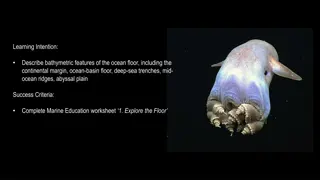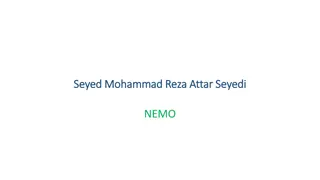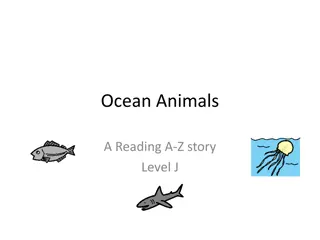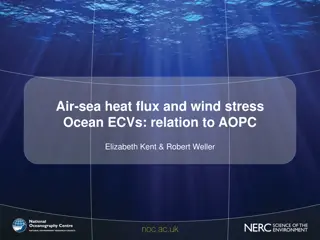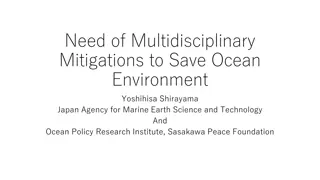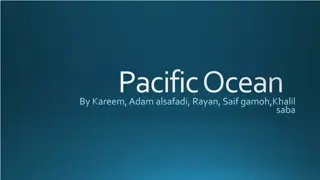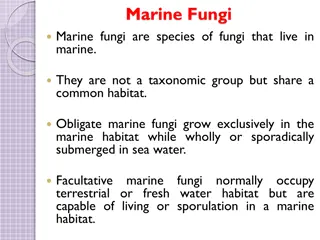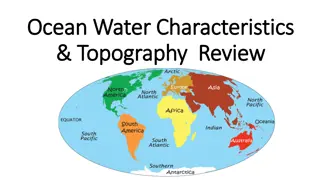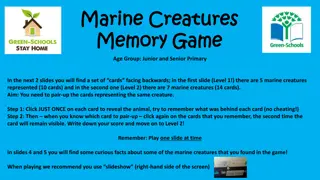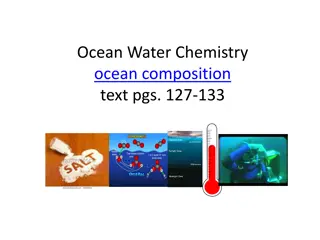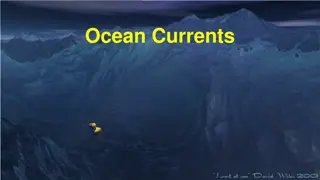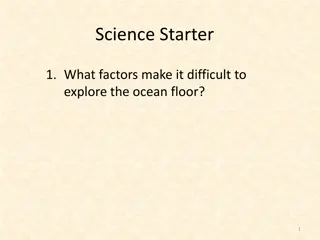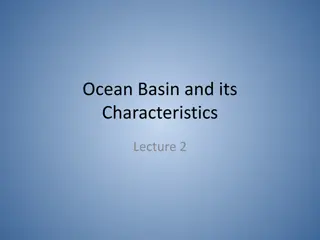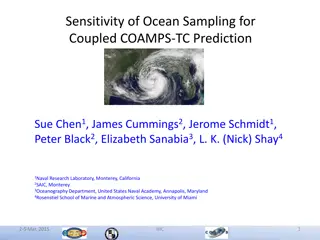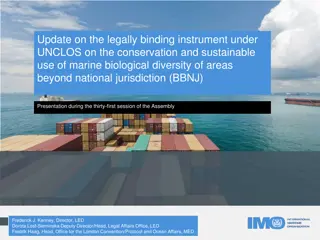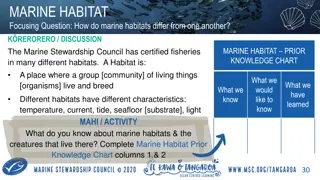Fascinating Marine Animals: Exploring the Diversity of Ocean Life
Dive into the mesmerizing world of marine animals and plants, where millions of species thrive in the vast ocean. Discover the enchanting features of fish, including their ability to adapt, change appearance, and employ camouflage. Explore the unique characteristics of seahorses, known for their color-changing prowess and intricate behaviors. Delve into the realm of sharks, formidable carnivores with over 1,000 species, including the majestic whale shark, the largest fish on Earth. Uncover the wonders of ocean life, from vibrant seahorse displays to the gentle nature of the endangered whale shark.
Download Presentation

Please find below an Image/Link to download the presentation.
The content on the website is provided AS IS for your information and personal use only. It may not be sold, licensed, or shared on other websites without obtaining consent from the author. Download presentation by click this link. If you encounter any issues during the download, it is possible that the publisher has removed the file from their server.
E N D
Presentation Transcript
Marine animals and plants There are millions of species of animals and plants in the ocean. Scientists have identified around 30,000 species of fish in the ocean.
Fish Fish are vertebrates, meaning that they have a backbone. They can only live in water. They have scales, fins and gills, which allow them to breathe by collecting oxygen dissolved in the water.
Fish Some fish have an amazing ability to change their appearance and adapt to their environment. They do so for a number of reasons.
Seahorses The seahorse is a type of fish. It can change colour to hide itself from predators or prey. It blends in by mimicking the colour and texture of its surroundings. This is called camouflage.
Seahorses Seahorses display bold colours to deter predators and ward off other seahorses during disputes over territory.
Seahorses They also alter their appearance during courtship to show interest or affection.
Sharks A shark is a type of fish. A baby shark is called a pup. Almost all sharks are carnivores. There are over 1,000 species of shark in the ocean, including the whale shark and the great white shark.
Whale shark The whale shark is the largest fish on Earth. It lives in tropical regions and is an endangered species because it is hunted by humans for its meat. It measures up to 12 m in length and weighs up to 14 tonnes. Whale sharks are very gentle and sometimes let swimmers hitch a ride on their fins!
Whale shark The whale shark feeds on krill, tiny fish and plankton, which it filters from the water as it swims with its mouth wide open.
Great white shark The great white shark lives in warm coastal waters in almost all parts of the globe. It is a ferocious predator with multiple rows of teeth and a powerful sense of smell.
Great white shark It swims at speeds of up to 56 km/h and hunts seals, sea lions, fish and whales. It will also leap above the surface of the water to snatch seabirds.
Whales Whales are marine mammals. All mammals are vertebrates and warm-blooded. They have hair or fur and breathe air.
Whales Whales come to the surface of the water and breathe through a blowhole at the top of their head. There are around 40 different species of whale. Some, such as the beluga whale, have teeth.
Whales Whales have a thick layer of blubber under their skin to keep them warm in cold water. The blue whale can be found in every ocean except the Arctic Ocean.
Whales It is the largest mammal on Earth, measuring up to 24 m in length and weighing up to 190 tonnes. A baby whale is called a calf.
Sea Lions A sea lion can grow up to 2.5 m in length and weigh over 500 kg. It hunts under water for fish, squid and octopuses, and can swim at speeds of up to 40 km/h.
Sea Lions It also likes to walk around on land on its four flippers. Large groups, or colonies, of sea lions are often seen lounging on beaches or rocks, basking in the sun. A female sea lion gives birth to live babies called pups and feeds them on milk.
Crustaceans Crustaceans are invertebrates, meaning that they do not have a backbone. They have jointed limbs and a segmented body covered by a hard shell.
Crustaceans They also have gills, plus two pairs of antennae for sensing movement nearby. There are around 50,000 known species of crustacean in the ocean, including barnacles, krill, prawns, crabs and lobsters.
Lobsters Lobsters live on the seabed and feed on fish and seaweed. They have five pairs of legs. The front pair include a long pair of claws.
Jellyfish Jellyfish are invertebrates. They are not crustaceans. They have no brain, heart, bones or eyes. They use their stinging tentacles to stun or paralyse prey before eating it.
Molluscs Molluscs are invertebrates. They have a soft body, which is sometimes protected by a shell. Some have a head and some also have tentacles. Molluscs are the most diverse group of animals on Earth, with around 50,000 known species.
Molluscs These include sea snails, oysters, mussels, squid and octopuses.
Octopus An octopus has eight tentacles. It can live from six months to six years, depending on the species. It prefers to live on the seabed, rising only to find food. It mostly feeds on crabs and lobsters.
Aquatic plants Scientists estimate that up to 80% of the Earth s oxygen is produced by aquatic plants in the ocean. These plants also provide food and habitats for marine animals. Aquatic plants include seagrass and seaweed, or algae.
Algae There are up to 1 million different species of algae. They can be red, green or brown in colour. Kelp is a green-brown algae that grows up to 45 cm per day. Kelp forests are among the most biodiverse habitats in the ocean.
The Great Barrier Reef The Great Barrier Reef off the north-east coast of Australia is one of the Seven Natural Wonders of the World. It is composed of 2,900 coral reefs and 900 islands, stretching a distance of 2,300 km. It was named as a UNESCO World Heritage Site in 1981 because of its unique features and outstanding beauty.
The Great Barrier Reef There are about 600 different species of coral in the Great Barrier Reef. Coral reefs have formed over millions of years. They provide a habitat for about 25% of all marine animal species, including seas stars.
The Great Barrier Reef The Great Barrier Reef is also home to sharks, turtles, sponges, oysters, giant clams, crabs, sea urchins, and many species of fish, including clownfish and butterfly fish.
Coral Coral is made up of tiny invertebrate animals called polyps, which come in many shapes and sizes. They have a soft inner body surrounded by a hard protective casing. They might look like plants, but they are not classed as such because they do not make their own food.
Coral They have small tentacles that they use to capture their food. They eat tiny algae that live on their bodies and tiny animals found in plankton.
Coral Climate change and water pollution pose threats to our oceans and seas. An increase in the water s temperature can cause the algae that live on the polyps bodies to escape, reducing their food supply.
Coral When this happens, the coral loses its colour and turns white. This is called coral bleaching. Water pollution can prevent polyps from secreting the minerals needed to build their protective casing.
Illustrations Shutterstock Beehive



